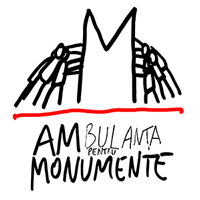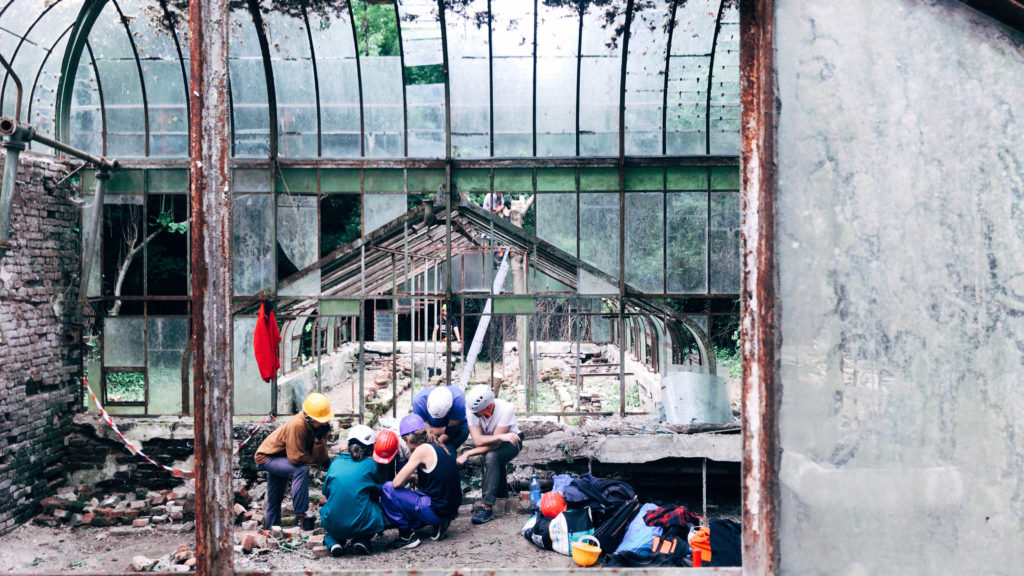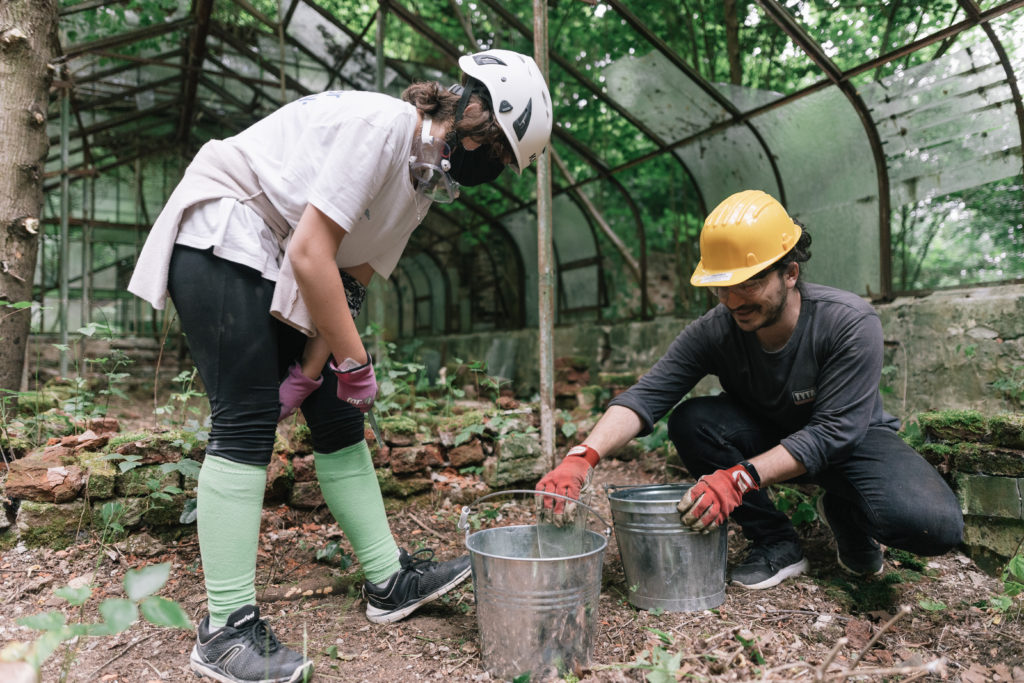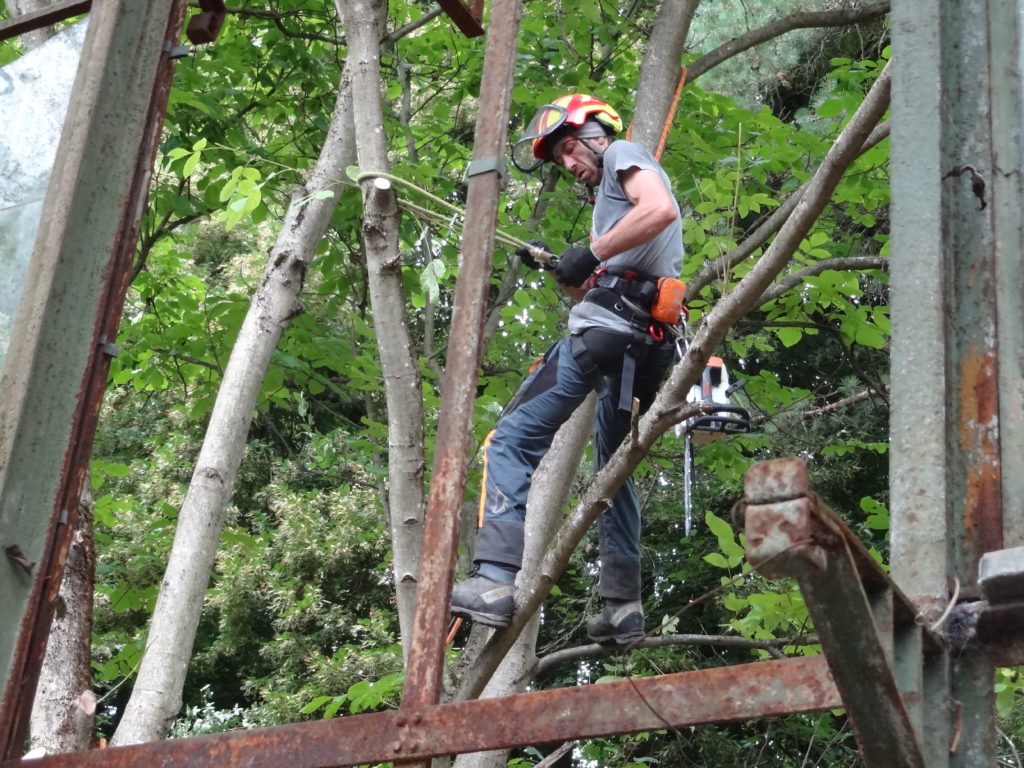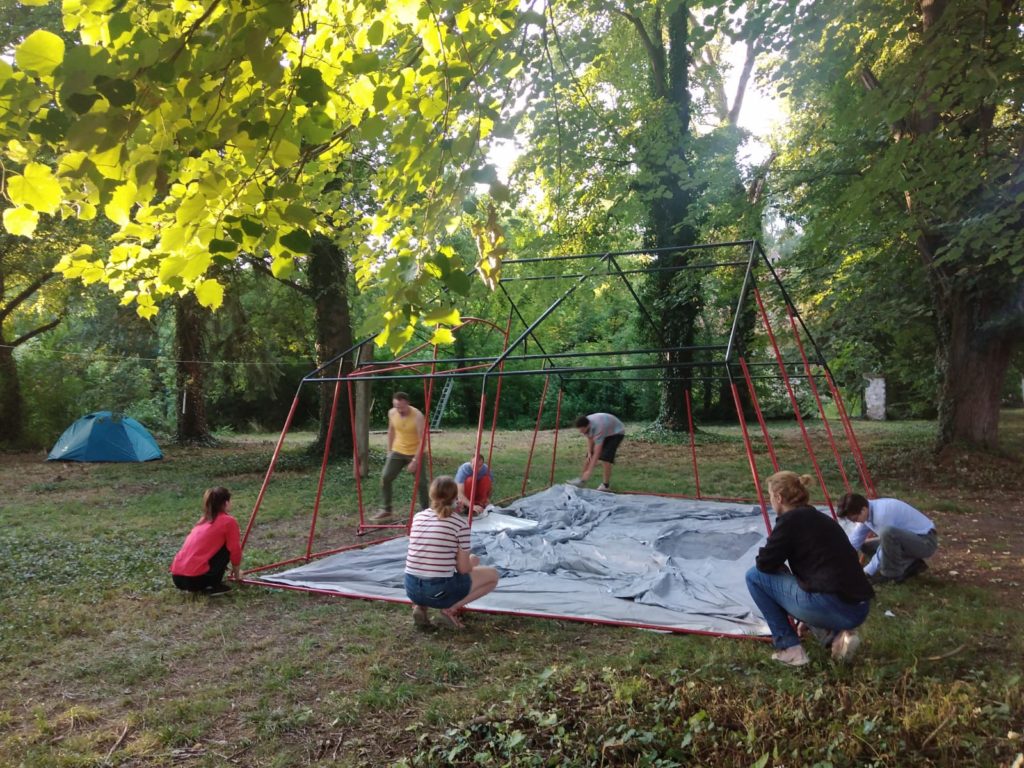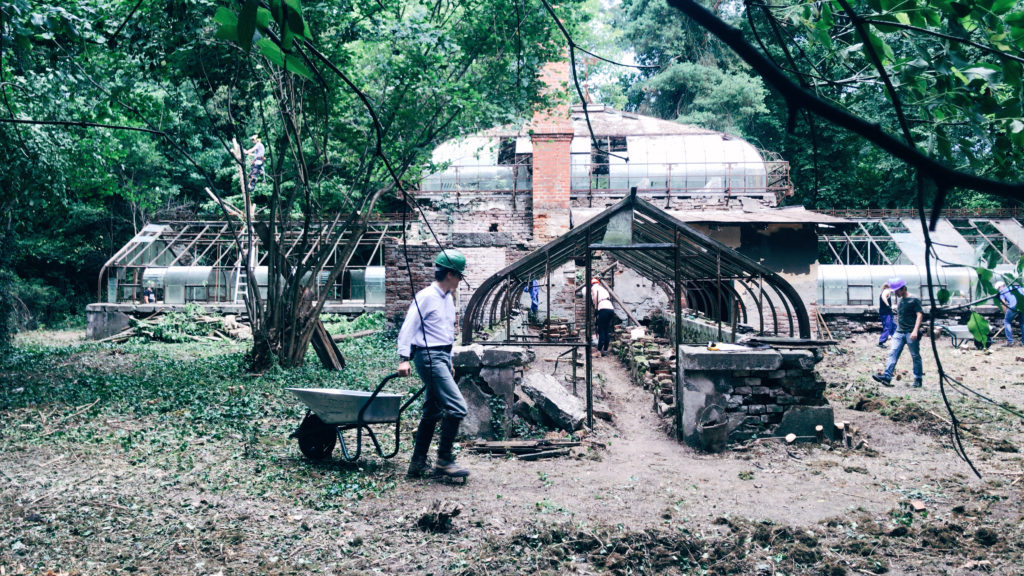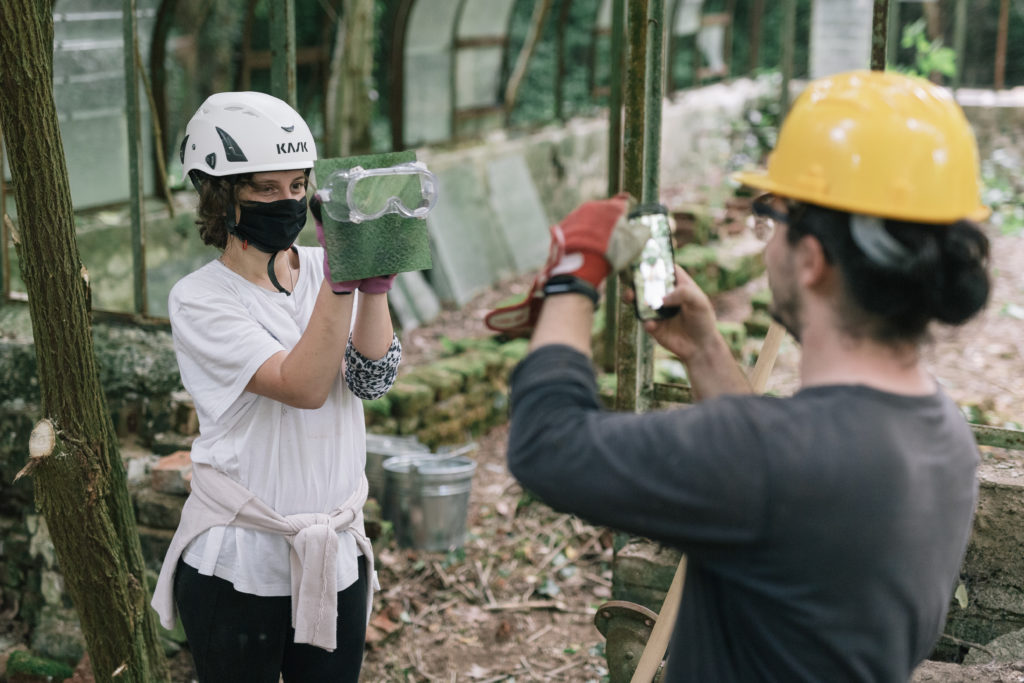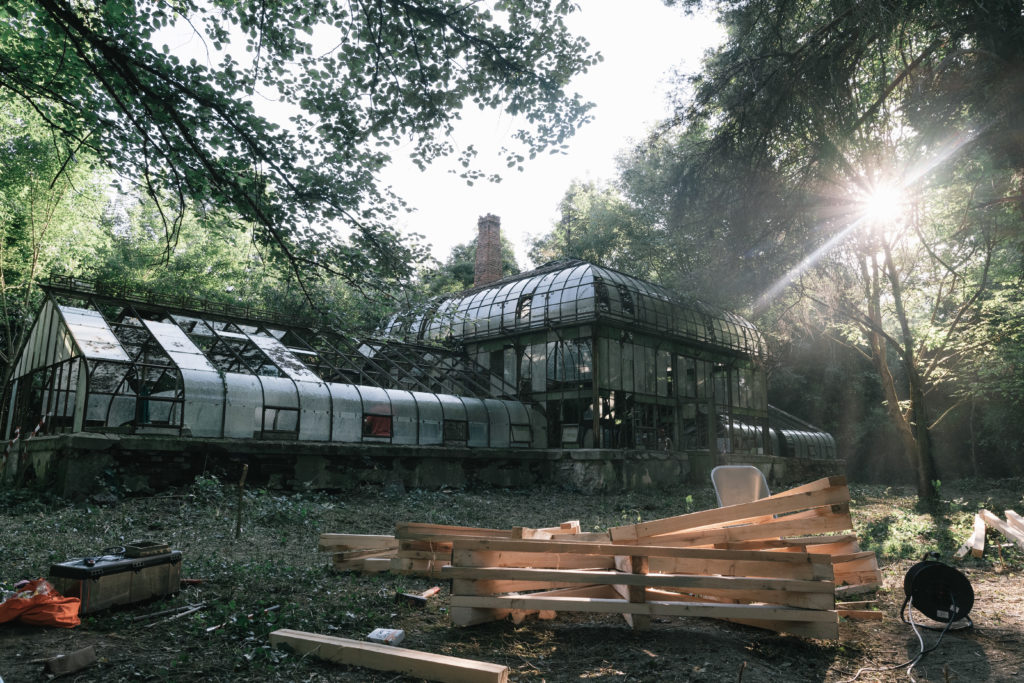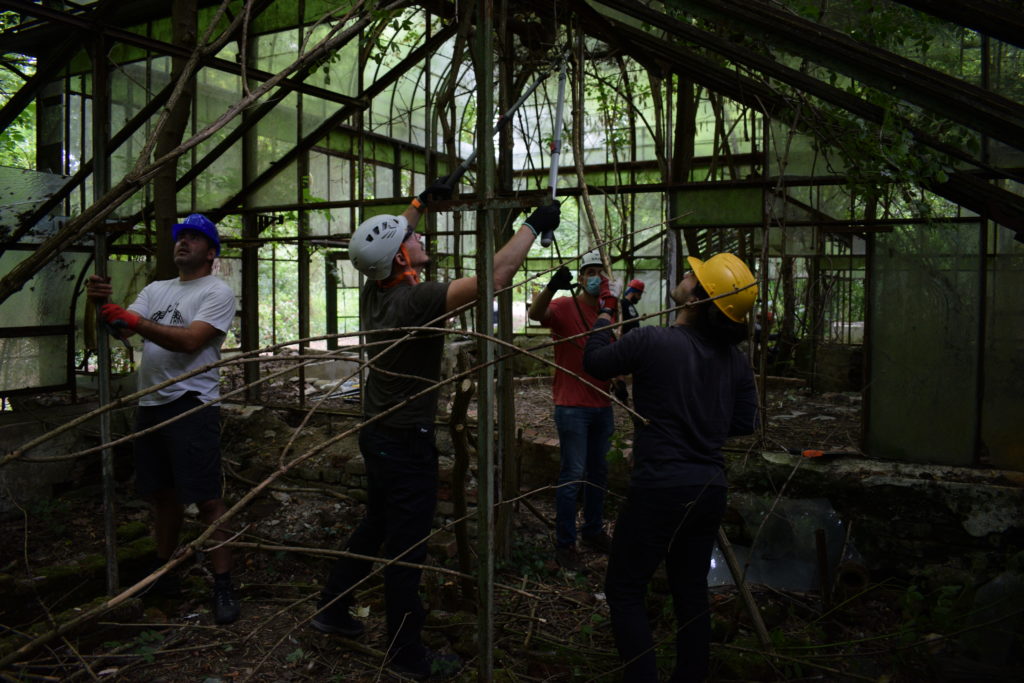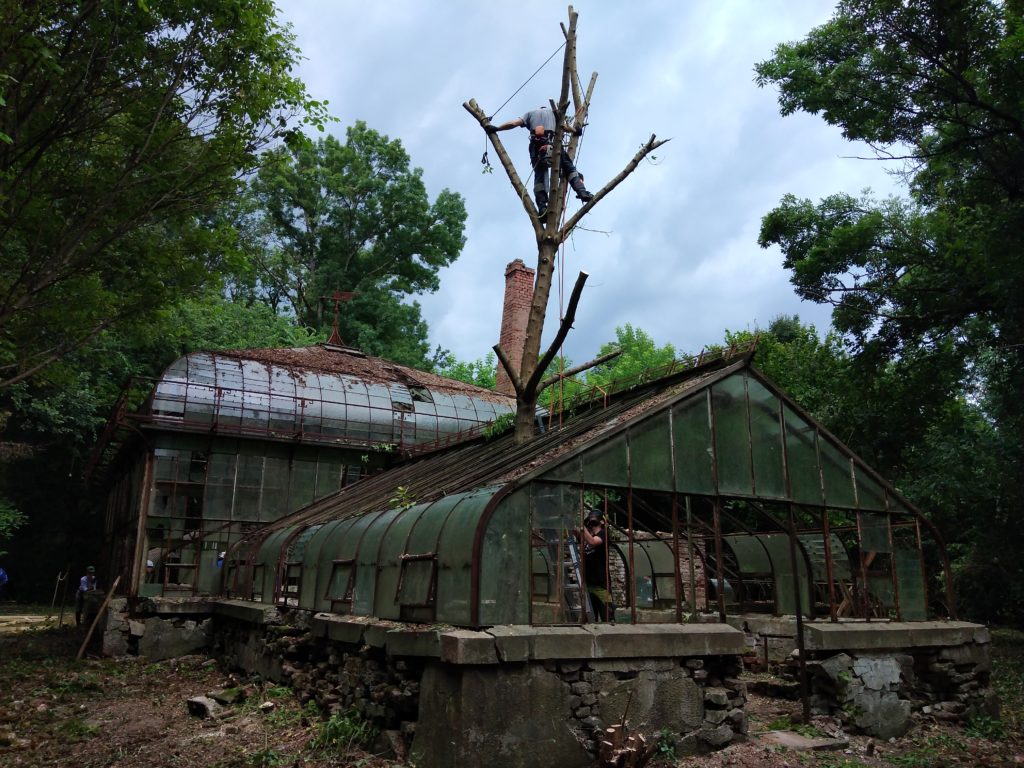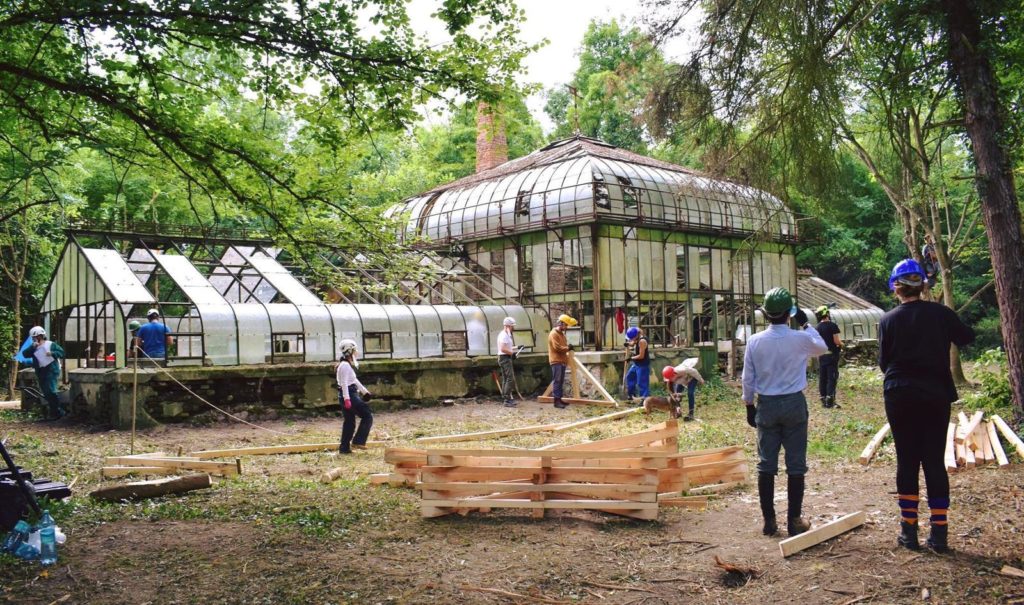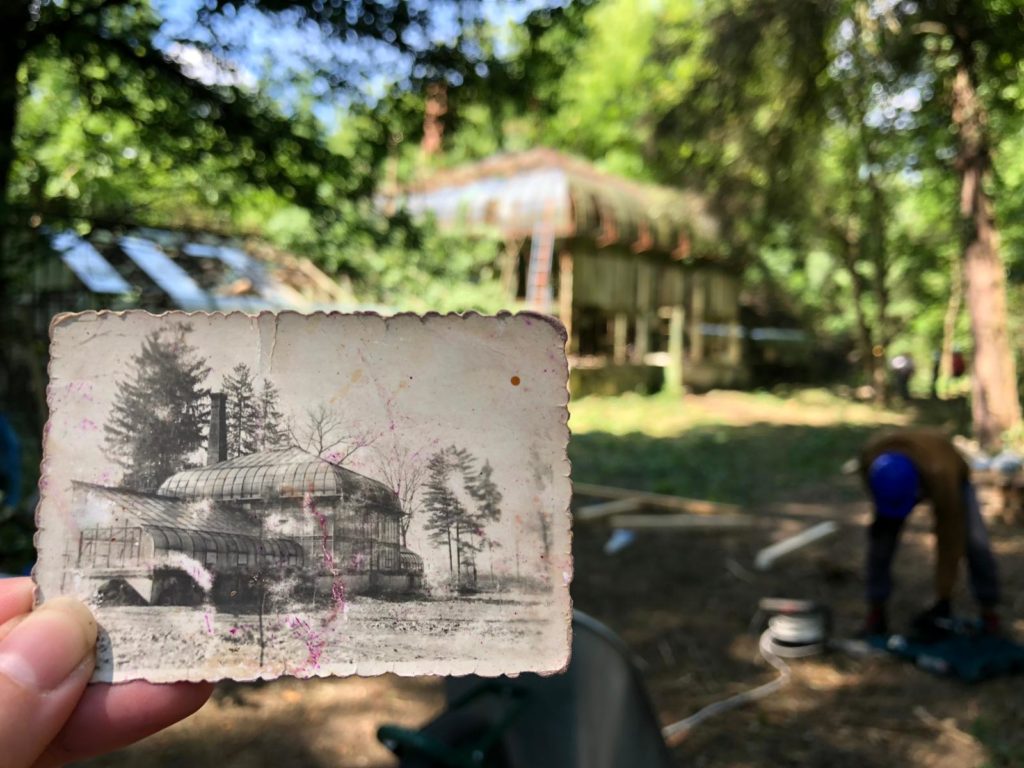Category: _Toate
Breb, The Orthodox Wooden Church
GENERAL PRESENTATION The wood church in Breb is known as one of the most representative old religious buildings in Maramureş. According to the dendrochronological analyses, the church was built from cut wood in the winter 1621/1622. The old core, containing the naos and the narthex, is continued to the east with two square apses and […]
Veronica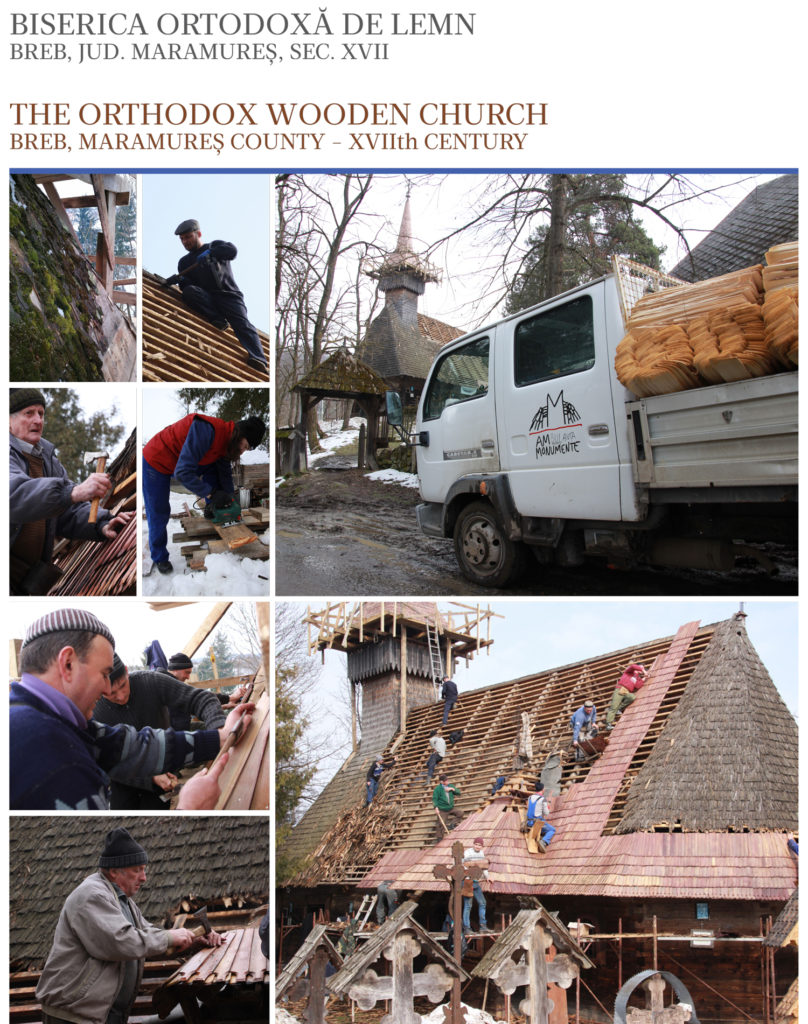
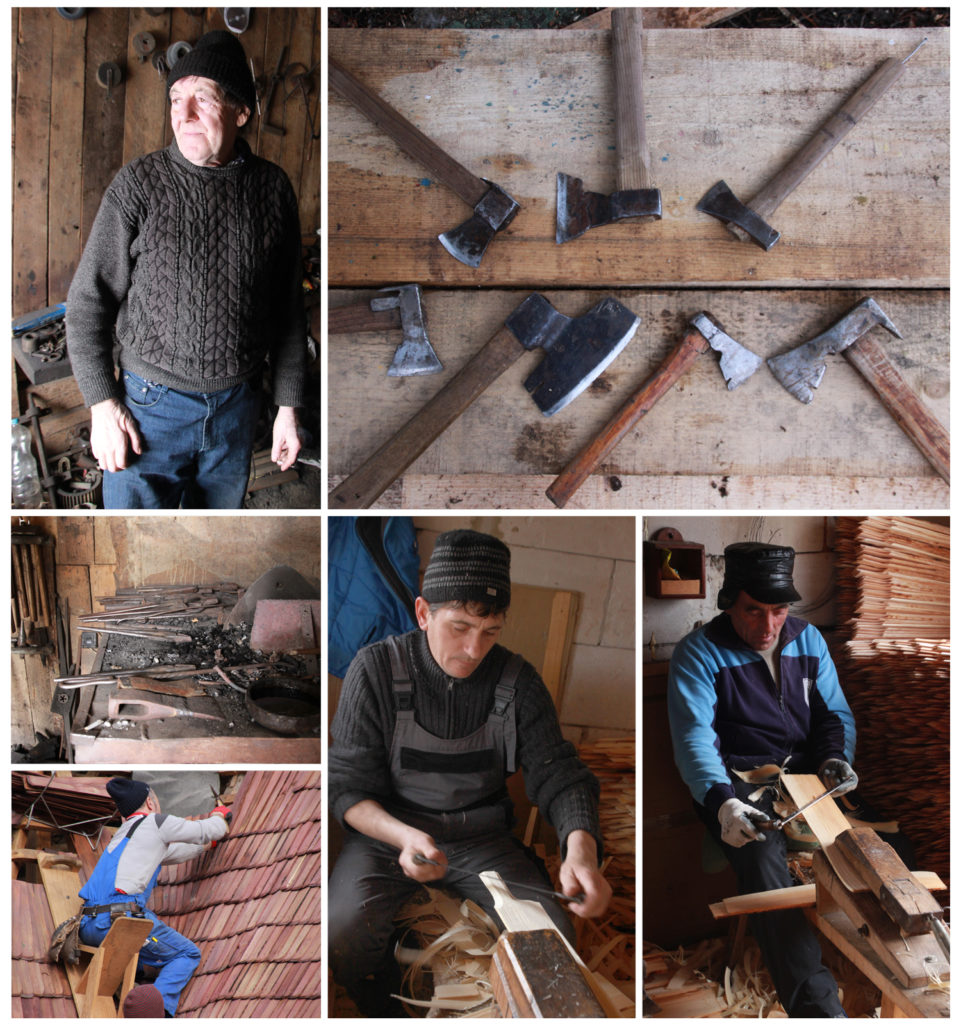
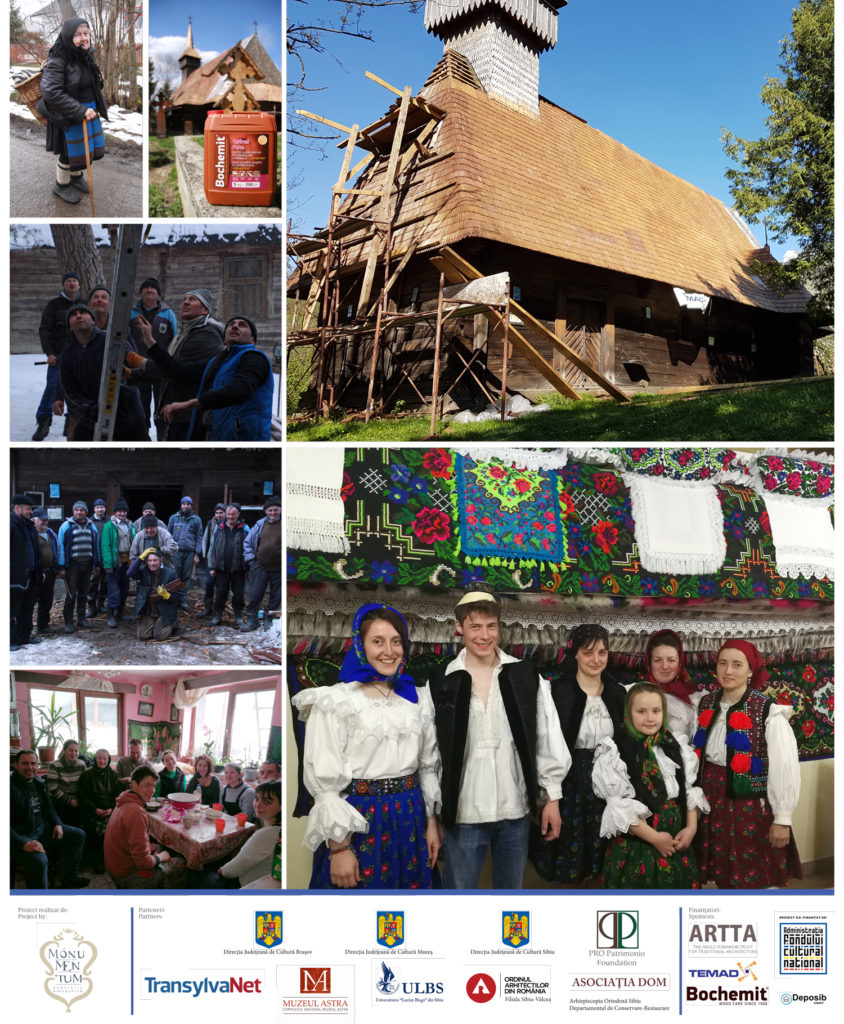
GENERAL PRESENTATION
The wood church in Breb is known as one of the most representative old religious buildings in Maramureş. According to the dendrochronological
analyses, the church was built from cut wood in the winter 1621/1622. The old core, containing the naos and the narthex, is continued to the east with two square apses and a polygonal altar, all dated in the 19th c. The painting of the church, only partially preserved, can probably be dated in the 17th c.
THE STATE BEFORE THE INTERVENTION
At the preliminary evaluation of the necessary works we concluded that the laths and rafters was relatively good. However, the covering was consistently degraded, thus allowing water infiltrations endangering the roof structure, the painting and the inventory of the church.
SAFETY INTERVENTION PROPOSAL
The evaluation of the building conservation was followed by the proposal to replace the degraded roof covering with a new one, made from the same
material as the previous (wood shingles), previously treated against weather and biological attacks with a solution containing copper sulphate.
ACCOMPLISHED INTERVENTIONS
The intervention started, as usual, with documenting the existing covering system. Afterwards, the old covering was dismantled and replaced with
a new one, by respecting the disposition, dimensions and manufacturing techniques of the old material, also treated accordingly to the proposal. The
works were possible thanks to the support offered by His Royal Highness The Prince of Wales, by the local parish, by Ocna-Şugatag City Hall and by
Petru Tiran (shingle producer). The accommodation and the meals for the volunteers were offered by the local community in Breb. No less than 45 men
(both young and old) from the locality, among which the priest Marian Pop, participated to the assemblage of the new shingle on the roof. S.C. TEMAD
CO SRL from Brașov offered the work equipment, while the wood treatment solution was provided by Bochemit (producer) and Deposib Expert from
Sibiu (dealer).
Copșa Mare, The Tower of the Evangelical Ensemble
GENERAL PRESENTATION The ensemble of the evangelical church contains a Gothic basilica, built in the 14th c. with several interventions in the following centuries, surrounded by an irregular polygonal precinct, the latter reinforced in the north-eastern corner with a rectangular tower. The tower, with two levels, has a lectern roof-type, with the slope towards the […]
Veronica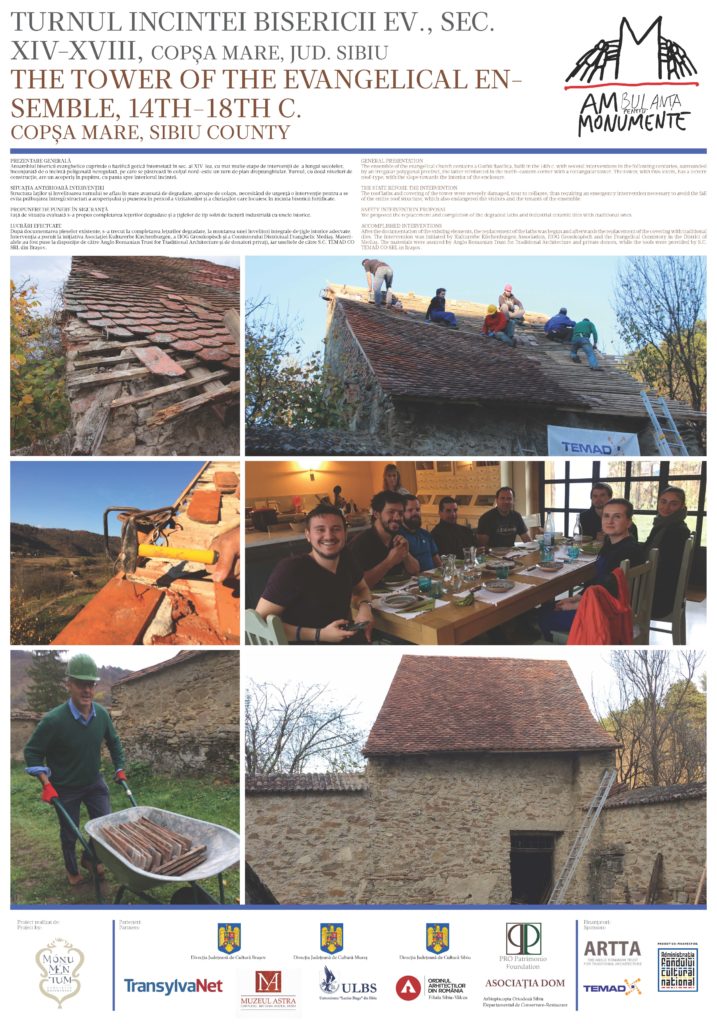
GENERAL PRESENTATION
The ensemble of the evangelical church contains a Gothic basilica, built in the 14th c. with several interventions in the following centuries, surrounded
by an irregular polygonal precinct, the latter reinforced in the north-eastern corner with a rectangular tower. The tower, with two levels, has a lectern
roof-type, with the slope towards the interior of the enclosure.
THE STATE BEFORE THE INTERVENTION
The roof laths and covering of the tower were severely damaged, near to collapse, thus requiring an emergency intervention necessary to avoid the fall
of the entire roof structure, which also endangered the visitors and the tenants of the ensemble.
SAFETY INTERVENTION PROPOSAL
We proposed the replacement and completion of the degraded laths and industrial ceramic tiles with traditional ones.
ACCOMPLISHED INTERVENTIONS
After the documentation of the existing elements, the replacement of the laths was begun and afterwards the replacement of the covering with traditional
tiles. The intervention was initiated by Kulturerbe Kirchenburgen Association, HOG Grosskopisch and the Evangelical Consistory in the District of
Mediaș. The materials were assured by Anglo Romanian Trust for Traditional Architecture and private donors, while the tools were provided by S.C.
TEMAD CO SRL in Brașov.
VOLUNTEERS
Razvan Stanciu, Tudor Tescoveanu, Cipi Munteanu, Ane Ristea, Ștefana Paul, Vlad Paul, Veronica Vaida, Eugen Vaida, William Blacker
Brusturi, Biserica de lemn „Sf. Arhangheli Mihail și Gavril”
PREZENTARE GENERALĂ Primele cercetări dedicate bisericii de lemn din Brusturi au avut loc în perioada interbelică, în timpul amplelor acțiuni de investigare desfășurate de profesorul Leontin Ghergariu asupra bisericilor de lemn sălăjene. În prezent, biserica de lemn din Brusturi se află în Lista monumentelor istorice (LMI) sub codul: SJ-II-m-A-050261. În partea superioară a ancadramentului […]
Veronica
PREZENTARE GENERALĂ
Primele cercetări dedicate bisericii de lemn din Brusturi au avut loc în perioada interbelică, în timpul amplelor acțiuni de investigare desfășurate de
profesorul Leontin Ghergariu asupra bisericilor de lemn sălăjene.
În prezent, biserica de lemn din Brusturi se află în Lista monumentelor istorice (LMI) sub codul: SJ-II-m-A-050261.
În partea superioară a ancadramentului ușii se găseşte o inscripție care datează biserica dar care nu a putut fi descifrată în totalitate. Dificultăți în citirea inscripției au întâmpinat mai mulți cercetători. Spre exemplu, Leontin Ghergariu preciza că ușa de la intrare este cioplită și că „are inscripție dar nu se poate descifra”, iar spre sfârșitul anilor ‘70, cercetătoarea Ioana Cristache-Panait reținea că din inscripția de ridicare a locașului, dispărută prin modificarea părții superioare a ancadramentului intrării, a rămas, doar sfârșitul acesteia: „Văleat 1701”.
SITUAȚIA DE DINAINTEA INTERVENȚIEI
La evaluarea prealabilă a lucrărilor, s-a constatat că starea de conservare a căpriorilor era relativ bună, dar învelitoarea și lații prezentau degradări avansate, permițând infiltrații de apă care puneau în pericol structura acoperișului, pictura interioară și inventarul de la interiorul bisericii.
PROPUNERE DE PUNERE ÎN SIGURANȚĂ
Evaluarea stării de conservare a avut ca urmare propunerea de înlocuire a învelitorii degradate cu o nouă învelitoare de şiţă horjită, din același material, tratată în prealabil împotriva intemperiilor și a dăunătorilor biologici cu o soluție pe bază de sulfat de cupru.
SPONSORI ȘI PARTENERI
Inițiativa interevenției îi aparține medicului Bogdan Pintea și a constat în documentarea, demontarea învelitorii din șiță și montarea unei învelitori noi din același material respectându-se dispunerea, dimensiunea și tehnica de confecționare a celei anterioare. Totodată s-a montat unui paratrăsnet. Alături deintervenția propriu-zisă, s-a reușit elaborarea unei serii de studii de specialitate (Studiu istoric – Bogdan Ilieș și Ileana Burnichioiu, studiu dentrocronologic – colectiv condus de Istvan Botar prin Arheo-Docs, raport de expertiză preliminară – colectiv condus de Dorottya Makay prin Irod M, studiu biologic – colectiv condus de Livia Bucșa prin Bioharcom). Lucrările au fost posibile datorită sprijinului material oferit de Alteța Sa Regală Prințul de Wales, de parohia Ortodoxă Jac, de Primăria Creaca, Consiliul Judeţean Zalău, precum și a numeroșilor donatori din localitate și din țară. Cazarea şi masa voluntarilor au fost asigurate de membrii comunităţii locale. La intervenţie au participat peste 30 de voluntari din diferite zone ale ţării. Uneltele au fost puse la dispoziţie de către S.C. TEMAD CO SRL din Brașov, iar substanţa de tratare a şindrilei de către producătorul BOCHEMIT prin distribuitorul Deposib Expert din Sibiu.
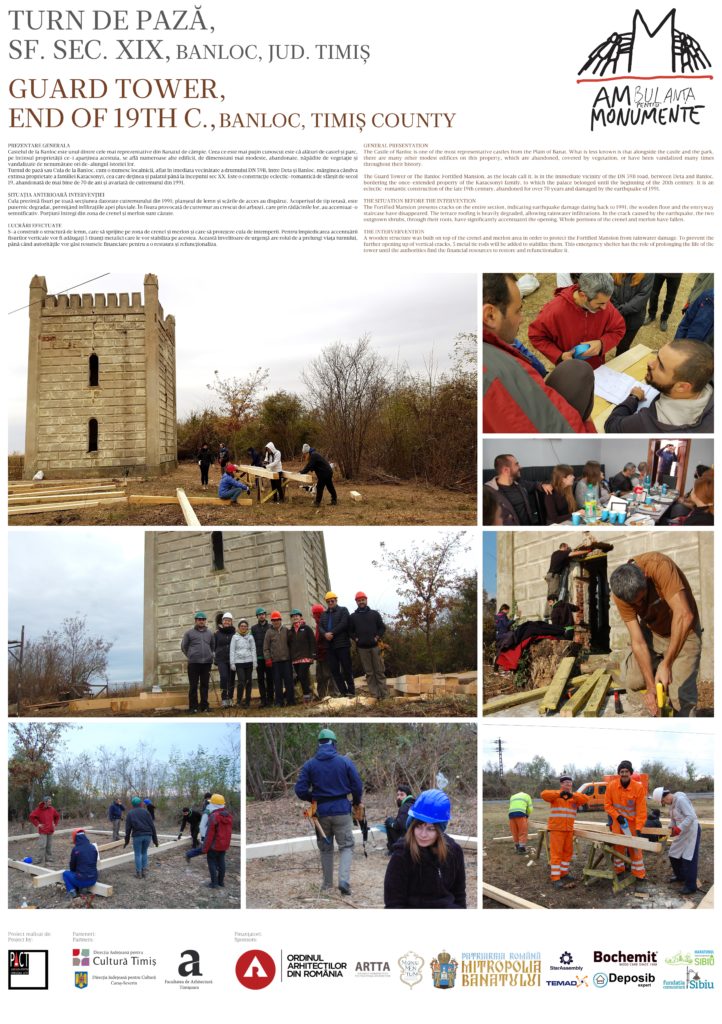
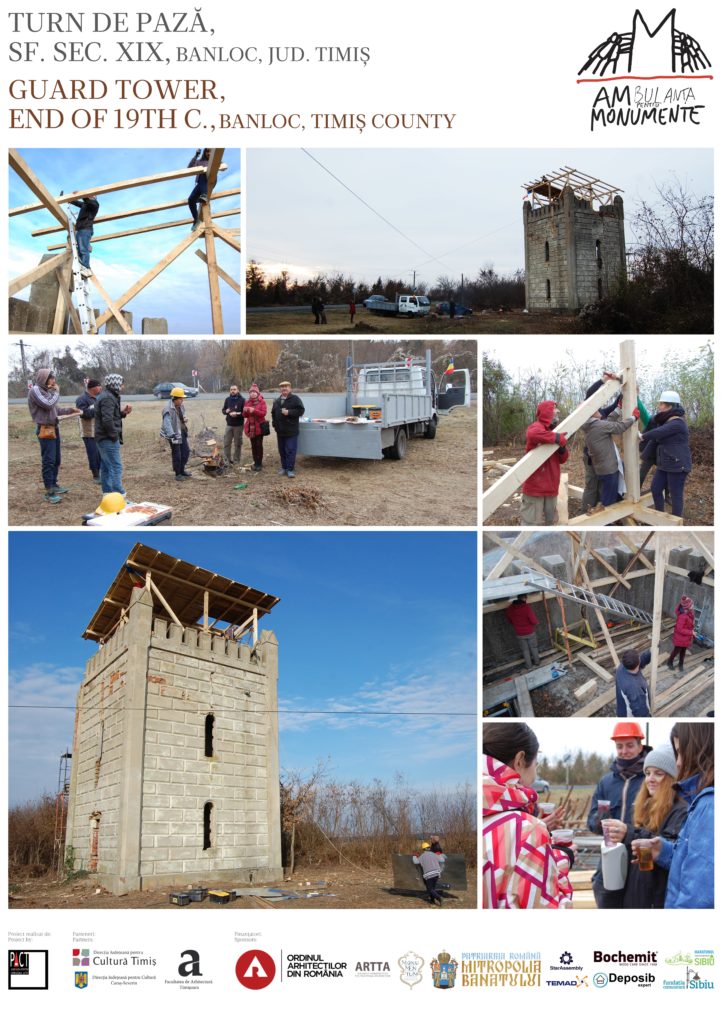
Gârbova de Sus, “From The Hill” Church
GENERAL PRESENTATION The ruined medieval church is located within the old cemetery, dominating the village. It was built from masonry in several phases during the 15th and the 16th centuries. In the first phase there was the naos and a small chapel, to which subsequently the narthex and the bell-tower were added. The latter only […]
Veronica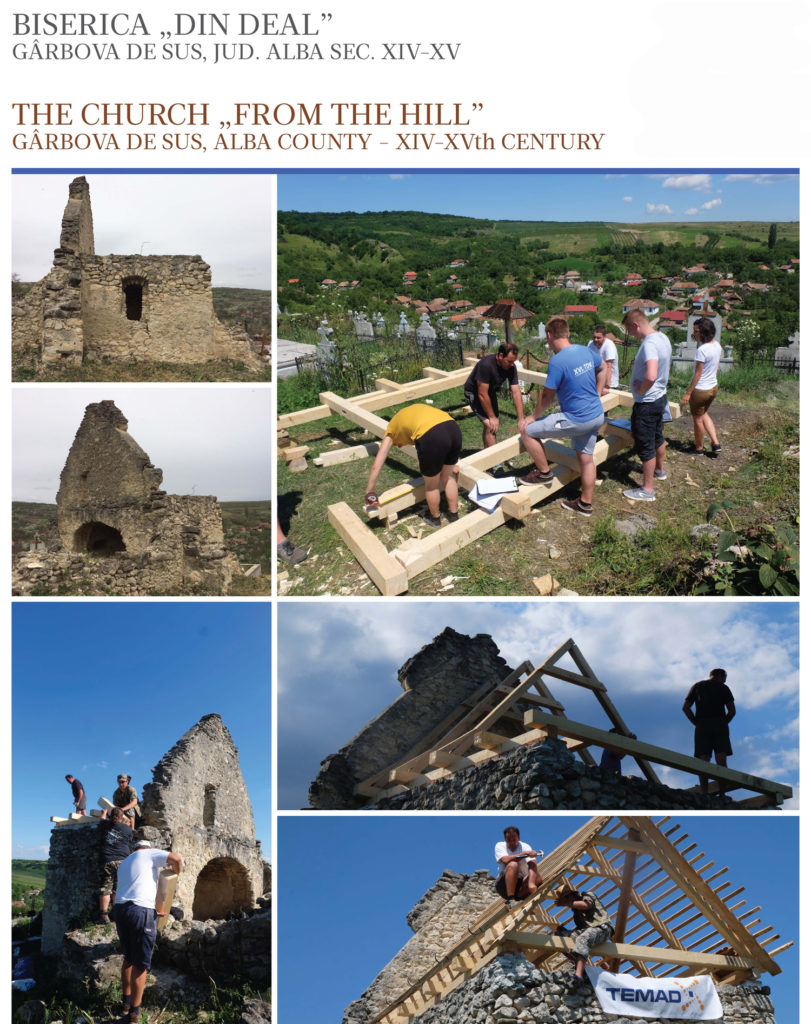
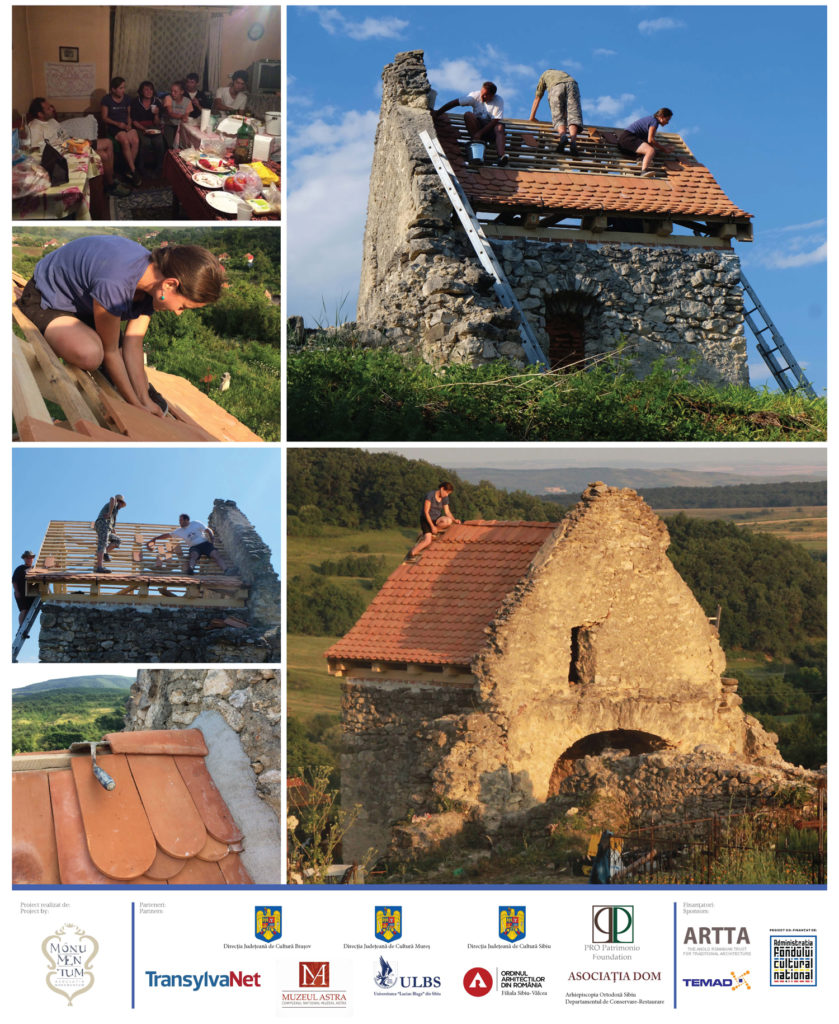
GENERAL PRESENTATION
The ruined medieval church is located within the old cemetery, dominating the village. It was built from masonry in several phases during the 15th
and the 16th centuries. In the first phase there was the naos and a small chapel, to which subsequently the narthex and the bell-tower were added. The latter only preserve their elevations up to 1-1,5 m or less, sometimes down near the walking level. The altar still has its semi-cylindrical vault and the interior medieval frescoes on the walls.
THE STATE BEFORE THE INTERVENTION
The restoration works begun before 1977 (conducted by DMI – The Historical Monuments Direction) were interrupted before securing the ruin against
the continuous degrading. Therefore, the altar and the pinion between the altar and the naos presented serious risk for collapse, thus endangering the safety of the locals still using the cemetery. Besides, the water infiltrations in the unprotected vault of the altar and especially the usual freeze-thaw action threatened the interior frescoes to rapid disappearance.
SAFETY INTERVENTION PROPOSAL
In collaboration with Monumenta Transsylvaniae Association (a group of painting restorers) we proposed: to build a temporary roof above the altar,
made from fir timber and covered by traditional flat tiles; to conserve the masonry walls as they are currently preserved, after cleaning off the rubble and deposits; to consolidate, prevent and limit the degradations of the frescoes still preserved on the northern and eastern walls of the altar.
ACCOMPLISHED INTERVENTIONS
Monumentum Association handled the first objective from the proposal list. In order to obtain a horizontal-based roof and also to avoid further masonry loss, the crown of the altar walls was levelled through a row of brick bond with hydrated lime-based mortar. Afterwards, the new framing was built in a neutral volume, since no relevant data was available about a former roof configuration, except for the existent pinion between the altar and the naos. The roof covering was made from manually made flat tiles. The interventions were financed by private donors, with the support of Anglo Romanian Trust for Traditional Architecture (ARTTA). The accommodation was supported by the locals and the meals were offered by Gârbova de Sus Parish. The tools were provided by S.C. TEMAD CO SRL in Brașov.
